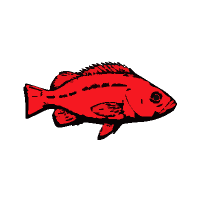Bank Stabilization
BPA MBACI Monitoring Effectiveness of Instream Habitat Projects (Bank Stabilization) v1.0
Many streams in the Pacific Northwest have depleted wood volume due to past human activities such as logging in riparian areas, salvage logging of wood in streams, splash-dams, and misguided attempts to remove perceived obstructions to salmon migration. In addition, streams have been modified and simplified due to agriculture and urban development. This process has reduced channel complexity, isolated main stem habitats from side-channels and floodplains, reduced cover for aquatic species, and altered channel morphology. Instream structures can be used to create pools, increase habitat complexity, reduce sediment transport, trap gravel needed for spawning, stabilize stream channels, provide food for aquatic invertebrates, and provide stream nutrients, increasing overall stream productivity (Roni and Quinn 2001). As a result, installation of instream structures, particularly placement of large woody debris (LWD), has become one of the longest used and most common techniques for improving fish habitat and mitigating human-caused degradation (Roni and Quinn 2001; Roni et. al. 2005). Use of instream structures began as early as the 1930’s in the Midwest and has been adapted to the higher gradient systems in the Pacific Northwest (Roni et al. 2005).
The effectiveness of instream structures in enhancing habitat has been debated due to the lack of evaluation, as well as confounding results due to improper structure placement and lack of documentation of effects on factors directly limiting habitat quality (Roni et al. 2005). Calls to better evaluate habitat improvement projects began in the early 1980s (Reeves and Roelofs 1982), and continued throughout the 1990s (Reeves et al. 1991; Chapman 1996; Kauffman et al. 1997). Others have suggested the approach to restoration should shift to protecting high-quality habitats and restoring connectivity and watershed processes before implementing instream habitat improvement projects (Roni et al. 2008; Frissell and Nawa 1992), or focusing on restoring riparian forests with trees large enough to replenish LWD naturally in the system over time (Collins and Montgomery 2002). The need for additional effectiveness monitoring and evaluation is widely apparent in the Pacific Northwest.
This document details the monitoring design, procedures and quality assurance steps necessary to document and report the effectiveness of Instream Habitat Projects at the Project site scale. This supports the Bonneville Power Administration’s Programmatic approach to project level Action Effectiveness Monitoring (AEM), as documented in “Action Effectiveness Monitoring of Tributary Habitat Improvement: a programmatic approach for the BPA Fish and Wildlife Program”. This protocol is based on the Washington Salmon Recovery Funding Board (SRFB) protocol, “SRFB – Monitoring Effectiveness of Instream Habitat Projects” (ID: 35) (https://www.monitoringmethods.org/Protocol/Details/35); however, variations in the design and metrics collected required modification of the protocol. This approach also draws heavily from the Scientific Protocol for Habitat Surveys within the Columbia Habitat Monitoring Program (CHaMP) (ID:806). This document details the monitoring design and procedures necessary to document and report reach scale effectiveness of projects treating:
· Channel Reconfiguration
· Installed Deflectors
· Log and Rock Control weirs
· Roughened Channels
· Woody Debris
Spatial Design
Data Collection Methodology
- Channel Segment Number v2.0
- Channel Unit Classification v2.0
- Estimating Instream Juvenile Salmonid Abundance Using Electrofishing v1.0
- Estimating Instream Juvenile Salmonid Abundance Using Snorkeling v1.0
- Fish Cover Elements v2.0
- Measuring Actively Eroding Streambanks v1.0
- Measuring Individual Large Woody Pieces v1.0
- Ocular Channel Unit Substrate Composition v1.0
- Particle Size Distribution and Particle Embeddedness v3.0
- Pool Tail Fines Grid v2.0
- Quantifying Artificially Placed Instream Structures (AIS) v1.0
- Site Layout v2.0
- Site Photos v2.0
- Stream Discharge v1.0
- Topographic Point Collection v2.0
Data Analysis Methodology
- Bank Erosion v1.0
- Calculating Amount of Spawning Habitat v1.0
- Calculating Juvenile Salmonid Density from Electrofishing v1.0
- Calculating Juvenile Salmonid Density from Snorkeling v1.0
- Calculation of Braid/Channel Ratio v1.0
- Calculation of Fish Use by Structure Type v1.0
- Calculation of Fish Use of Structures by Life Stage and Species v1.0
- Calculation of River Complexity Index (Brown 2002) v1.0
- Calculation of variation in thalweg profile and channel width v1.0
- Change in Bank Stability v1.0
- D16, D50, and D84 Particle Size in Riffles Calculation v2.0
- Fastwater Cobble Embeddedness Calculations v1.0
- Hydraulic modeling for analysis of floodplain habitat v1.0
- Large Wood Frequency v1.0
- Large Wood Volume Calculation v1.0
- Large Woody Debris Counts v1.0
- Log10 Volume of LWD v1.0
- Percent Fish Cover Calculation v1.0
- Pool Tail Fines: Particles <2mm and <6mm v1.0
- Pool/Riffle Ratio v1.0
- Proportion of Reach Containing Eroding Banks v1.0
- RBT – Bankfull Width Profile Calculation v1.0
- RBT – Bankfull Width To Depth Ratio Profile Calculation v1.0
- RBT – Channel Unit Calculation v1.0
- RBT – Wetted Width Profile Calculation v1.0
- Site Discharge Calculation v1.0
- Substrate Composition Calculations (Boulder, Cobbles, Gravel, Sand and Fines) v1.0
- Summary statistics for Instream Habitat Projects v1.0

